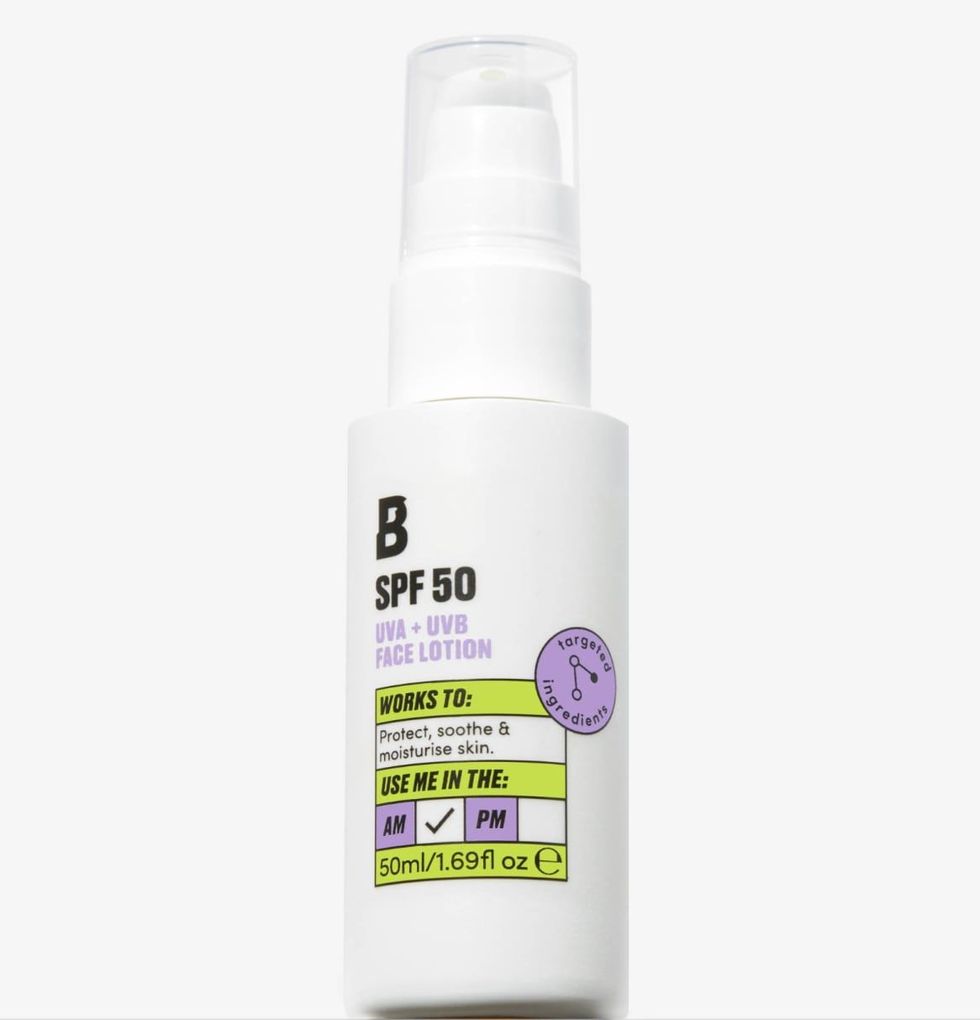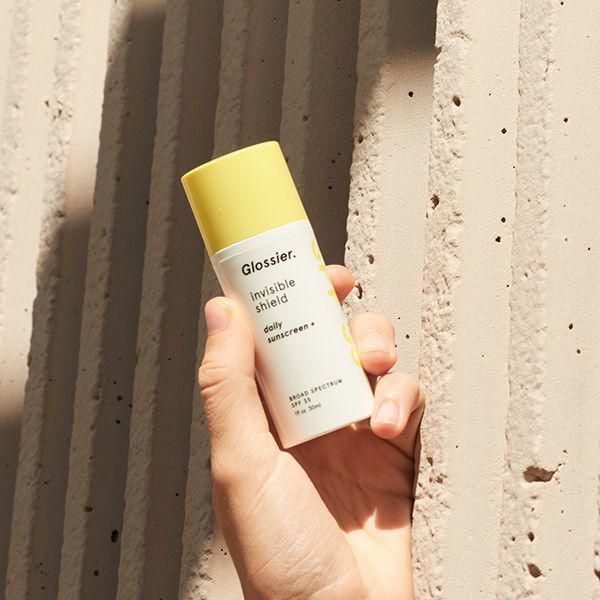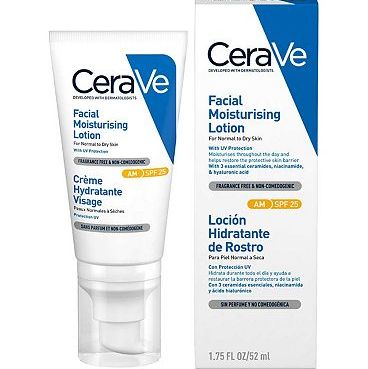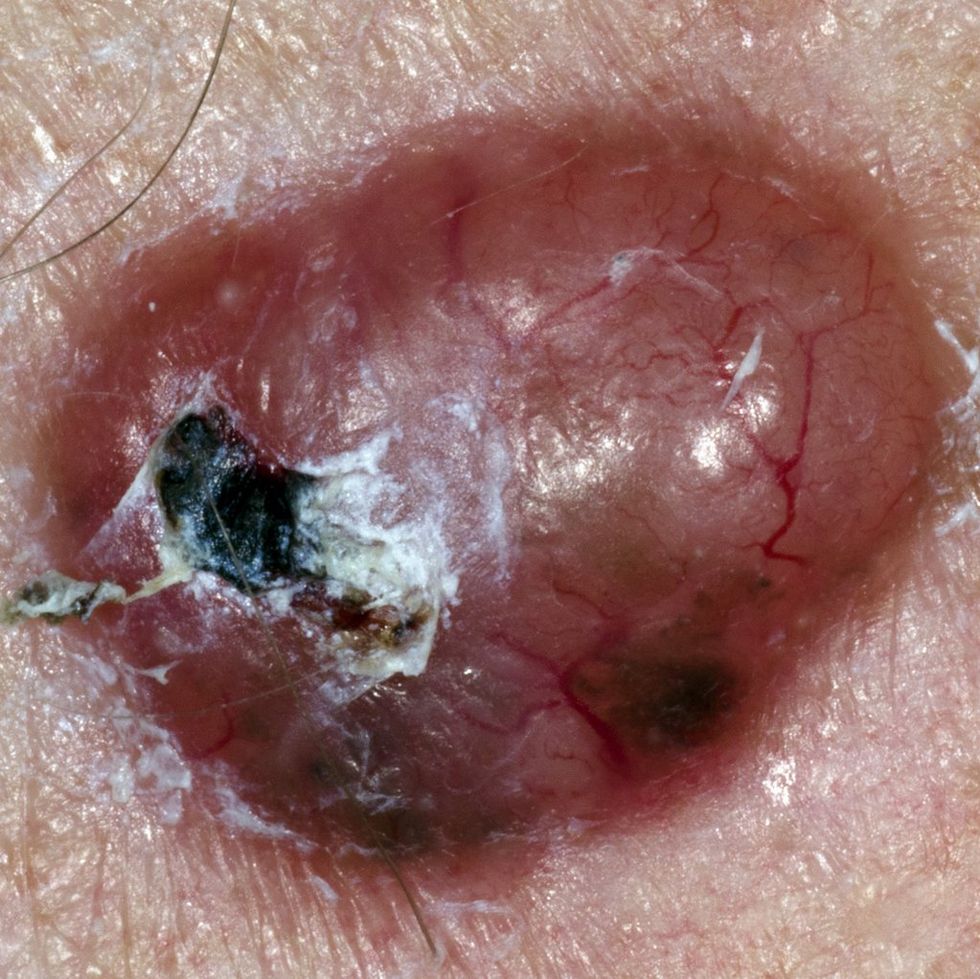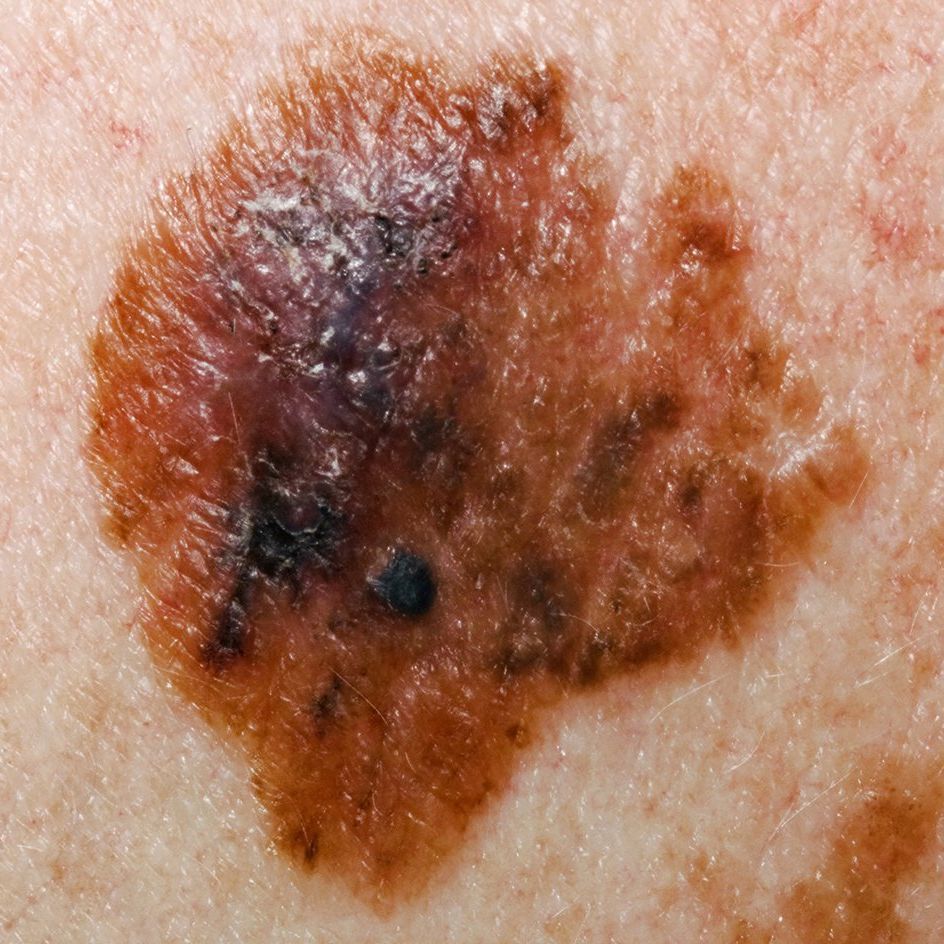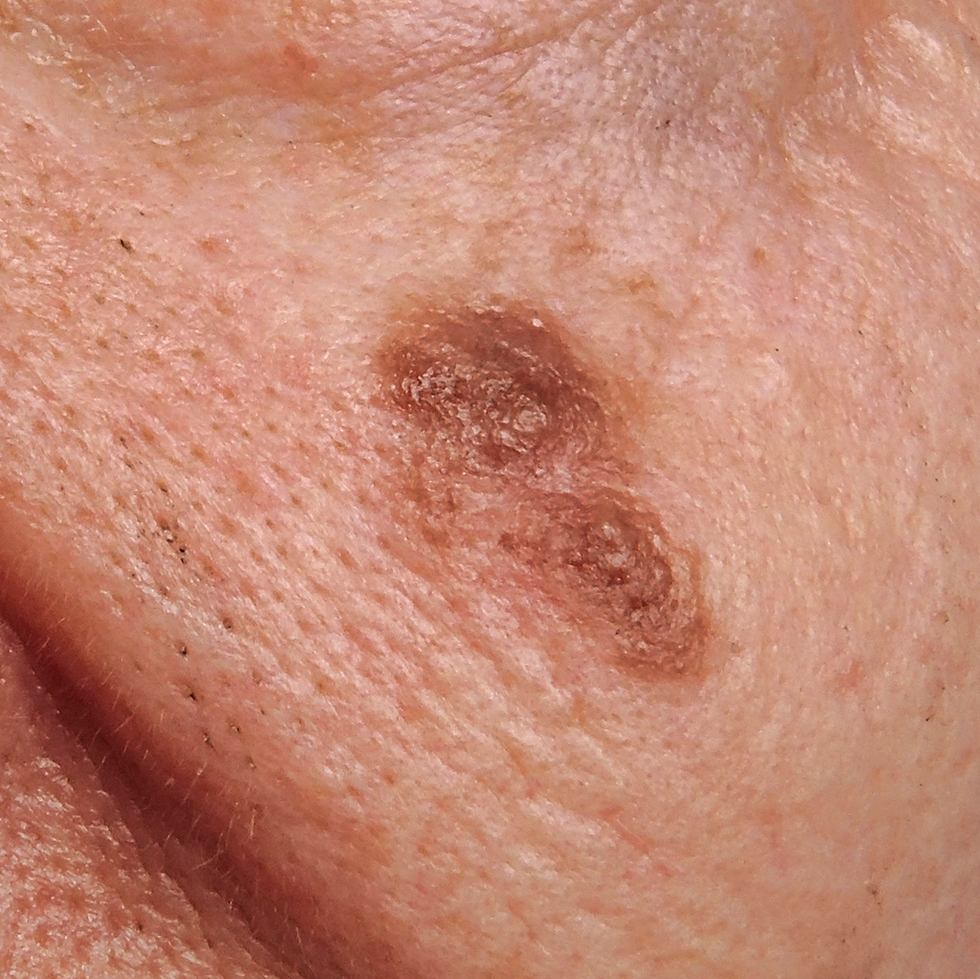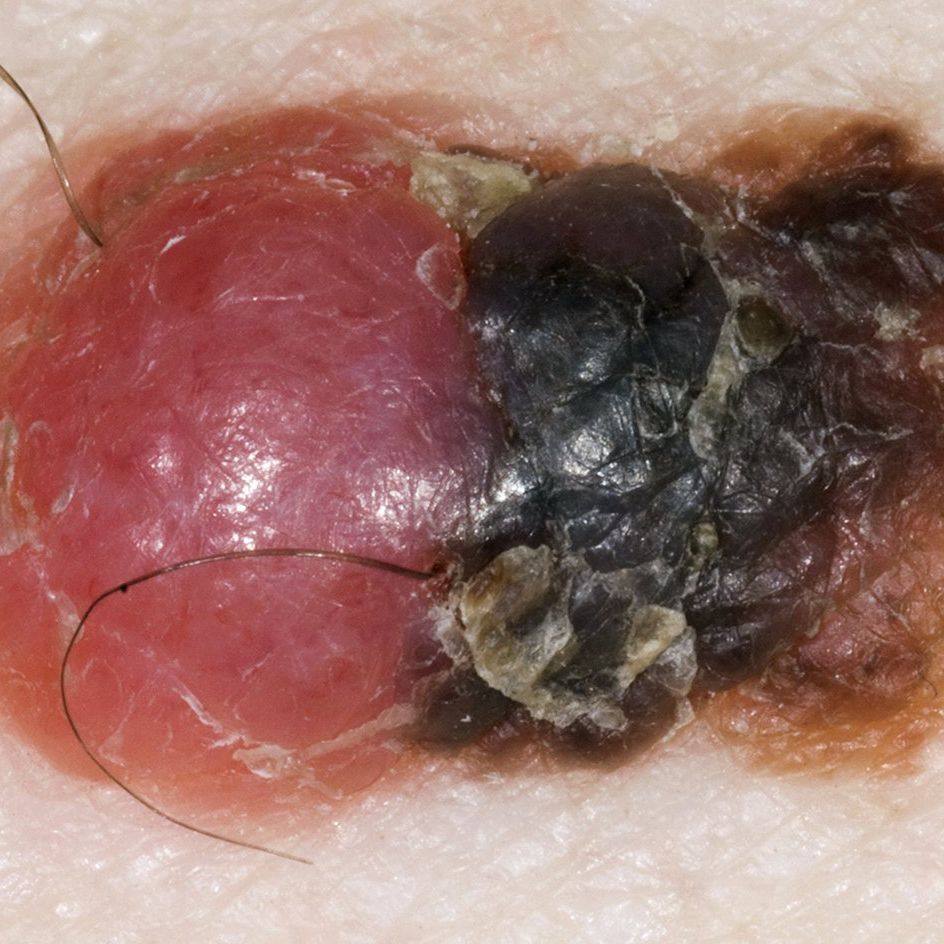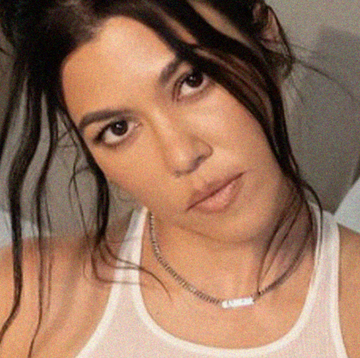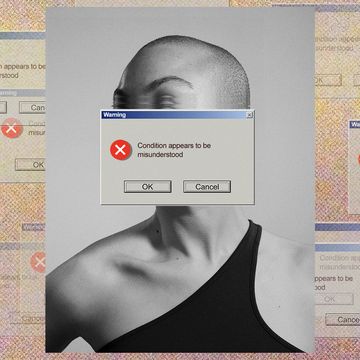Jump to:
- What are the different types of skin cancer?
- Non-melanoma types:
- What can non-melanoma cancer look like?
- Melanoma types:
- What can melanoma cancer look like?
- How concerning is each type of skin cancer?
- What should you do if you think you might have skin cancer?
- So, what are the basic skin cancer signs to look out for?
Right now, skin cancer is on the rise, with presenter and radio DJ Chris Evans the latest celebrity to announce he's been diagnosed with the condition. Speaking on his Virgin Radio show on Monday morning, he confirmed he has a type of melanoma, though this has thankfully been discovered in the early stages, meaning it's treatable.
"We need to discuss what’s going on with this issue. It is a melanoma. There’s this phrase called a malignant melanoma – you know once you get something, and you find out all about it – that is a redundant phrase because if it is a melanoma it is malignant," said Evans.
"But it’s been caught so early, just so you know, that it should be completely treatable."
The presenter – who said he would start treatment on 14 September – has also urged listeners to get any unusual symptoms checked.
According to the latest figures from Cancer Research UK, melanoma skin cancer cases have reached a record high among all age groups, with 17,500 people diagnosed each year in the UK. There's also scope for rates to increase by at least 50% over the next 20 years, which means by 2040, there could be 26,500 cases a year.
The charity explained that nine out of 10 skin cancer cases in the UK are caused by overexposure to ultraviolet (UV) radiation from the sun and sun beds, with older age also a main risk factor. While we hate to say it, a rise in travel and spending more time abroad is likely partly to blame for the increase too.
Alongside these stats, skin cancer awareness has also been a trending topic of conversation thanks to Khloé Kardashian bravely sharing her experience with melanoma.
During the latest season of The Kardashians, the first few episodes were mainly focused on the 39-year-old, who at the time, was undergoing tests for a "tiny little dot" on her face that she thought was acne.
Speaking on the show, she revealed: "I have done one biopsy on this bump that I just assumed was a zit, turns out it's not a zit."
"This was way more serious than either I understood or I anticipated it to be," she later said.
Following an operation to remove the tumour, thankfully, Koko got the all-clear. But she has since made sure to shed light on the disease and has repeatedly urged fans to get regular checkups. After all, they could be potentially lifesaving.
The good news is that despite the record increase of cases we have seen in the UK as of late, death rates from skin cancer have started to decline, and "more people than ever" are surviving the disease thanks to advancements in research and early diagnosis and treatments, according to Cancer Research UK.
With that in mind, we spoke to Georgina Hill, Cancer Research UK’s former health information officer to give the professional and medical spiel.
"Although skin cancer isn’t one of the most common causes of cancer death, in recent years more people have been getting and dying from the disease. You can reduce your risk by ditching sunbeds and avoiding too much sun by seeking shade, covering up with clothing and regularly reapplying sunscreen on parts that aren’t covered up."
"When skin cancers are spotted early, treatment is more likely to work. So it’s important you get to know how your skin normally looks and feels. And if you notice a change that doesn’t go away, like a spot, sore or itching, it’s best to get it checked out by a doctor."
So, let's unpack the different types of skin cancers, what to look out for, and what to do, if like Khloé, what you think is a spot is actually something a little more serious...
What are the different types of skin cancer?
There are two main variants of skin cancer - melanoma and non-melanoma - but one is considered to be more worrying than the other. Georgina explains: "When we talk about skin cancer, we’re actually talking about a number of different types, but the most serious type is melanoma skin cancer.
"Too much UV from the sun or sunbeds causes most cases of skin cancer, but a person’s risk depends on a combination of things, including their skin type."
Melanoma is the third most common cancer in people aged 25-39 but almost 90% of cases could be prevented if people took better care of their skin in the sun both at home and abroad. Getting sunburnt, just once every two years, can triple the risk of melanoma skin cancer.
In terms of melanoma and non-melanoma skin cancers, here's EYNTK...
Non-melanoma types:
Basal cell carcinoma
Dr Vishal Madan from the Wilmslow Hospital, part of HCA Healthcare UK, tells Cosmopolitan: "Sometimes referred to as a rodent ulcer, this type of cancer presents itself as a non-healing ulcer or a flat red patch with visibly raised blood vessels, or as a skin coloured lump anywhere on the body."
"It’s a very slow growing cancer which is associated with very few symptoms and isn’t usually known to spread. For this reason the cancer is often not detected early and is neglected. If left for too long, it can break the skin, bleed, get infected or, in rare instances, invade the bone and local tissues."
SCC or Squamous cell carcinoma
"This type of skin cancer is known to be a more aggressive, non-healing sore or rapidly growing lump which can feel tender to touch," says Dr Vishal. "They are often found on sun damaged areas, or on chronic wounds or ulcers. This cancer is very capable of spreading to local lymph nodes so should be diagnosed and treated as quickly as possible."
What can non-melanoma cancer look like?
"The first sign of non-melanoma skin cancer is usually the appearance of a lump or discoloured patch on the skin that persists after a few weeks and slowly progresses over months or sometimes years. This is the cancer, or tumour," the NHS states
"In most cases, cancerous lumps are red and firm and sometimes turn into ulcers, while cancerous patches are usually flat and scaly."
Melanoma types:
Superficial spreading melanoma
Dr Arun Thiyagarajan, Medical Director at Bupa Health Clinics tells Cosmopolitan: "This is the most common type, and is diagnosed in middle aged people and tends to grow outwards, rather than downwards into the skin. It is not at risk of spreading to other parts of the body until it begins to grow downwards into deeper layers of the skin.
"Superficial spreading melanoma can be raised or flat with irregular shape and borders. Usually it is brown, tan, black, red, blue or even white and can change slowly over the course of several years. Appearing in the torso of men, the legs of women and upper back of both sexes, the lesions can sometimes be itchy and uncomfortable."
Nodular melanoma
"This can grow quite quickly downwards and deeper into the skin," says Dr Arun. "This type of melanoma cancer is often a raised area on the skin surface. It is usually brownish black, or black and is found in areas most exposed to the sun."
Lentigo maligna melanoma
"This develops from very slow growing pigmented areas of the skin. This type of skin cancer is flat and grows outwards in the surface layers of the skin. Over time, it may increase in size and change shape. Nodules or lumps are then formed if the melanoma grows into the deeper layers of the skin.
"Lentigo maligna is most common in elderly people, appearing in areas that get a lot of sun exposure. As this form of cancer appears on the face, it can be similar to a freckle or age spot. Usually a shade of brown, they can also be pink, red or white."
Acrallentiginous melanoma
"A rare type of cancer, but is usually found in dark skinned people. It is most commonly seen in the palms of hands and soles of feet but can also grow under the nails. This type of cancer appears as flat brown/black margins which enlarge slowly and cause no pain."
Amelanotic melanoma
"This tends to have no, or very little colour. Occasionally they are pink or red, or have light brown or grey around the edges. This type of cancer is rare and difficult to diagnose due to the lack of colour and can be mistaken for other conditions of the skin."
What can melanoma cancer look like?
"A new mole or a change in an existing mole may be signs of melanoma," the NHS points out. This can include:
How concerning is each type of skin cancer?
As with all cancers, it depends very much on how soon you catch it and whether it has spread. "Skin cancer occurs when a previously normal cell undergoes a transformation and begins to grow abnormally and multiply," says Dr Arun.
"As these cells multiply, they form a mass or tumour. If the tumour is benign, it is non-cancerous and is unlikely to spread, if it is malignant, cells are cancerous and can spread to other tissues and organs."
"When it comes to skin cancer, melanoma cancer is by far the most aggressive and more commonly known. It is found in areas most exposed to the sun and the risk of getting skin cancer grows with age."
If you keep a regular check on your moles, you should be able to spot any changes quickly. "Non-melanoma cancers can be treated if identified early; cure rates for type BCC is high, around 90%," says Dr Arun. "Patients who have been treated for non-melanoma cancers will need to monitor the affected area after their treatment and seek advice from their GP or dermatologist if they spot any further changes."
What should you do if you think you might have skin cancer?
"The best advice would be to visit a GP or dermatologist if you spot any area of the skin that is changing in colour, shape or size," Dr Arun suggests. "If moles appear to be getting bigger, becoming itchy, inflamed or bleeding these can be an indication of something more serious going on.
"If you spend a lot of time exposed to the sun, you are at a greater risk of developing skin cancer."
He adds: "With most non-melanoma cancers, they can be treated if found early enough so pay close attention to your body if you are concerned about a certain area. Taking photographs of concerning areas is a great way to monitor change. If you start to see differences, book an appointment to get it looked at by a professional. It’s better to be safe than sorry!"
So, what are the basic skin cancer signs to look out for?
So, to recap. While our experts have explained all of the different types of skin cancers - both cancerous and not - it's worth reiterating the basic signs to look out for in general, all reported by Cancer Research UK. If you notice any of the following - don't panic - just make sure you book a trip to your local GP to get whatever it is checked out...
A sore that doesn't heal
Anything see-through, shiny, pink, pearly white, or red that's sore and rough with raised edges could be a red flag.
Ulcer
If it hasn't healed within four weeks, head to the docs.
A lump
It could be small, shiny, pink or red, and slow growing.
Red patches on the skin
This could be a completely non-cancerous situation, but if they're itchy, it's worth getting checked just in case.
Freckles or moles
Any changes to current moles or freckles or new ones cropping up on your skin could be a melanoma symptom.
Dr Vishal Madan is a Consultant Dermatologist, Laser and Dermatological Surgeon. Dr Madan specializes in the diagnosis and treatment of all skin conditions. He has a special interest in skin cancer treatment.
Dr Arun Thiyagarajan is Medical Director at Bupa Health Clinics.
For more information on skin cancer visit the NHS. Book an appointment with your GP via the NHS or Bupa.
This article is not intended to be a substitute for professional medical advice or diagnosis. Always seek the advice of your physician or other qualified health provider with any questions you may have regarding a medical condition.


